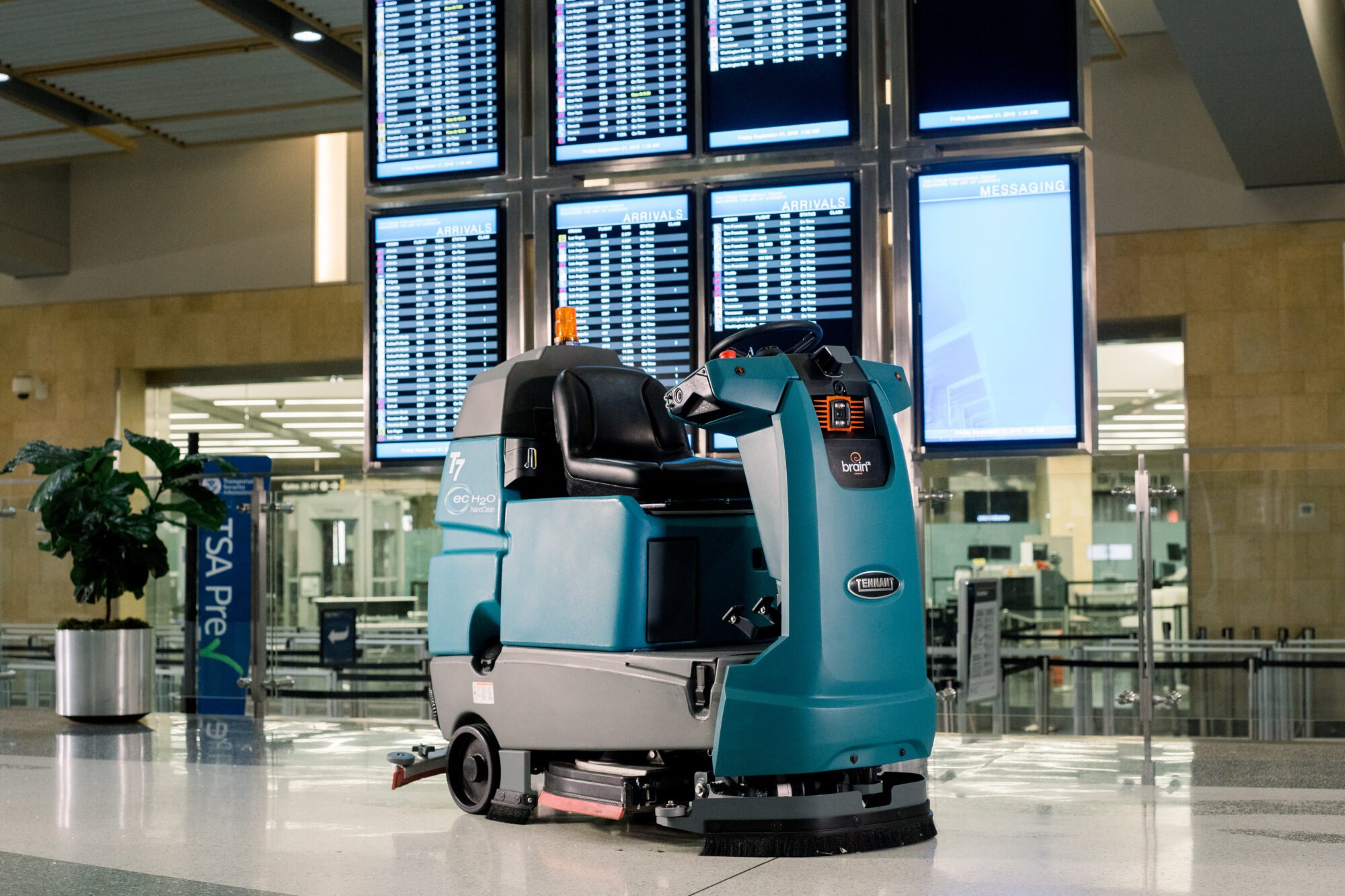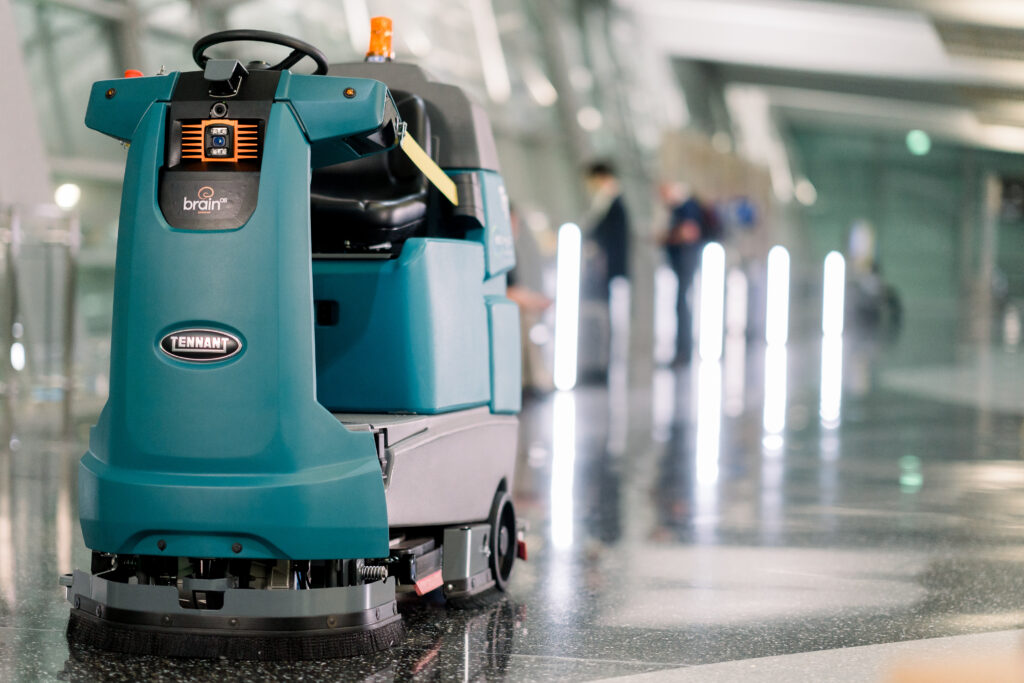As government guidelines fluctuate in response to the emergence of new Covid-19 variants, automated cleaning solutions provide a glimpse of consistency amid a constantly changing airport environment.
Thanks to a worldwide pandemic, passengers are much more hesitant to enter airports than before. In a survey carried out by professional services company GHD, which drew on 1,000 respondents, 33% indicated that they would travel less by air compared with before the Covid-19 pandemic, 29% will travel the same amount and only 9% said they would travel more. With revenue in a tenuous position, airports must do their utmost to keep a consistent flow of customers passing through terminals. Simply put, this means meeting heightened cleanliness demands in the face of Covid-19.
There is a sharp focus on airport conditions and what management is doing to mitigate the spread of the virus and keep passengers safe. This has served as a pretext for innovations in airport cleaning, chief among them the growing prevalence of autonomous mobile robots (AMRs) used for cleaning. These self-driving floor scrubbers have now stepped in to keep airports clean during this volatile recovery phase.

Affecting airport cleaning operations
Robotic cleaners operate in public environments with plenty of dynamic obstacles to navigate and large areas of floor space to clean. They are designed to free up staff from long periods sitting on machines doing repetitive tasks. In airports, the introduction of autonomous floor scrubbers has allowed cleaning staff to focus elsewhere on high-touch points, deep sanitizing and elevating traveler experiences. This technology has been a welcome addition at a time when cleaning has never been more important and when labor is sometimes in short supply.
Airport cleaning operations feature a great deal of repetitive groundwork, meaning it is straightforward to deploy a robot in this scenario. During the pandemic, a growing number of global airports have deployed this technology to maintain high levels of surface hygiene, keep workers out of harm’s way and give the public confidence that it is safe to travel once again.
Non-stop service
Automation provides more reliability and consistency wherever it is deployed. In the case of airports, robotic cleaning technology has obvious advantages in that it is capable of doing the heavy lifting and cleaning efficiently and effectively at all times. Additionally, data-driven heat maps and other metrics help verify and optimize cleaning performance.
What’s more, robots can be put on task throughout the day and at night with minimal disruption to travelers passing through airport facilities. Round-the-clock cleaning has now become a simpler reality owing to the rollout of AMRs, which do not require rest and breaks.
Machines are automatically updated with enhanced software at regular intervals, meaning that robots in airports are constantly improving over time. A terminal will deploy a machine today, and in six months it will inevitably work more efficiently, having been optimized to deliver better performance.
Digital cleanliness
The automated trends helping airports in the here and now will shape the sector in years to come. The ability of AMRs to capture and utilize data continually improves functionality and ensures they can be increasingly used in ever more dynamic environments.
Deloitte’s latest airport-focused white paper could not have been clearer on this point: ‘Aviation will recover, but it will take unprecedented collaboration, greater data sharing and more digitalization across the ecosystem to ensure the industry emerges from the pandemic more responsive, more agile and more financially sustainable than ever before.’ So when it comes to cleaning, the chance to go digital is undoubtedly being viewed as an opportunity.
Meeting the need for clean
The travel sector is in a sensitive position. As potential vectors for Covid-19, airports have a duty to reassure the general public that they are doing their best to keep people safe. Travelport’s passenger survey findings support this concern: 71% of respondents said that an improved cleaning program during and between flights is a very important factor and would influence them when booking flights.
AMRs can play a crucial role in demonstrating an airport’s commitment to cleanliness and technological innovation. Leveraging automation technologies and analytics will become increasingly common in the future, especially as variants of Covid-19 linger and airports evolve in line with ongoing challenges. Airports that make the most of automation innovations early will inevitably reap the greatest rewards in the present and near future.



